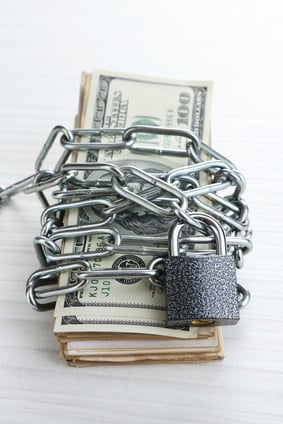The International Trade Blog International Sales & Marketing
The Difficulties of Securing a Back-to-Back Letter of Credit
On: January 19, 2015 | By:  Roy Becker |
2 min. read
Roy Becker |
2 min. read
 Many bankers have experienced this familiar scenario: A company, usually a middleman, claims to have landed a big export contract. Likely undercapitalized, they do not have the finances to purchase the product so they can resell it at a handsome profit. They do have, or claim they can get, a letter of credit in payment of the final sale once they ship the goods.
Many bankers have experienced this familiar scenario: A company, usually a middleman, claims to have landed a big export contract. Likely undercapitalized, they do not have the finances to purchase the product so they can resell it at a handsome profit. They do have, or claim they can get, a letter of credit in payment of the final sale once they ship the goods.
The middleman approaches a bank thinking that the bank would not turn down the financing for a deal this profitable. First, the company requests an advance, or a loan, since they have a letter of credit as a source of repayment. The company soon learns, however, that banks in the United States do not make loans against letters of credit because of performance risk.
What if the middleman fails to perform precisely according to the terms of a letter of credit? In that case they might not get paid and, consequently, they may not be able to repay the loan.
Not easily deterred, however, the exporter comes up with the next best idea. Since the middleman has a letter of credit in hand, he requests the bank to issue a second letter of credit to the supplier of the product. The first letter of credit would constitute the collateral for the second letter of credit. This arrangement is often called a back-to-back letter of credit, which is also sometimes called primary and secondary letters of credit, a mother and baby letter of credit, or a master and secondary letter of credit.
Since a U.S. bank will not agree to make a loan against a letter of credit, it will also refuse to issue a back-to-back letter of credit. Again, what if the bank has to pay on the secondary letter of credit but cannot collect on the primary letter of credit? Over the years, too many war stories have scared off most bankers.
Very few, if any, U.S. banks will entertain the notion of issuing back-to-back letters of credit. This practice may vary in different countries and is, in fact, quite routine in some Asian countries. Any bank in the U.S. that would issue a back-to-back letter of credit would only consider doing so for well-established customers who have proven their ability and expertise to perform correctly.
Banks do, however, usually offer a couple of alternatives: an assignment of proceeds or a transferable letter of credit. I’ll discuss these options in future articles.

About the Author: Roy Becker
Roy Becker was President of Roy Becker Seminars based in Centennial, Colorado. His company specialized in educating companies how to mitigate the financial risk of importing and exporting. Previous to starting the training company, Roy had over 30 years experience working in the international departments of several banks where he assisted many importers and exporters with the intricate banking needs associated with international trade.
Roy served as adjunct faculty in the International MBA programs at the University of Denver and University of Colorado in Denver. He conducted seminars at the World Trade Center Denver and The Center for Financial Training Western States, and was a guest lecturer at several Denver area Universities.
Roy retired in 2021.


